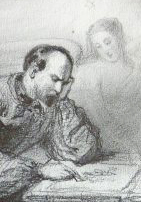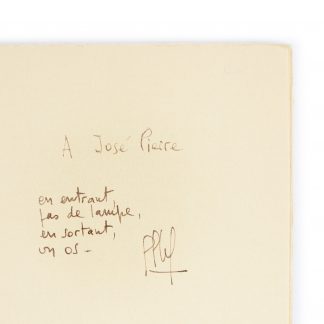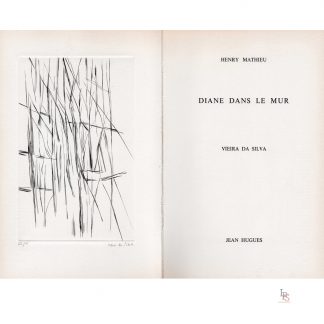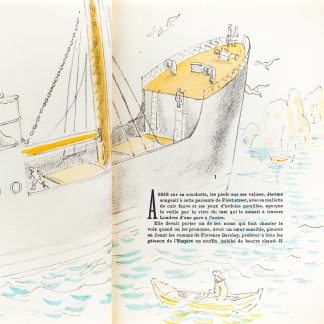Description
ITALIAN CARNET OF 35 LEAD DRAWINGS made between 15 May 1834 and 22 May 1835.
The notebook opens with a drawing of four cherubs showing the date 1834 in Roman numerals, followed by a signed self-portrait of the artist sitting pensively surrounded by inspirational subjects: an angel, a dove, children and, in the distance, a statue of Napoleon. At Lacaze's feet, a cardboard box bears the title of the notebook Sketches &c. Then we find some famous romantic themes, orientalism, soldiers, Napoleon on his horse, animals (lion, dog, dressed musical monkeys), beggars, landscapes, religious scenes, seascapes... We also note the young girl arranging her very long hair in front of a mirror and two characters on a small boat hooked to an enormous mooring buoy.
THEOPHILE LACAZE A FORGOTTEN ROMANTIC PAINTER
Born into a family of wine merchants in Libourne (Gironde) on June 15, 1799, Pierre Théophile Lacaze learned painting by himself and saw his first painting accepted at the Salon of 1824. Rewarded in 1827 at the exhibition of the Société Philomathique de Bordeaux, from 1830 onwards he adopted a romantic style particularly influenced by the works of Delacroix.
In 1834, he took part in the Bordeaux Exhibition in aid of the poor, exhibiting seven highly acclaimed works (six watercolours and one drawing): "Mr Lacaze's delightful compositions were a big hit with the public. A warm and vigorous colour, a sometimes incorrect but always witty drawing, a great naivety in the poses, a wise composition, a perfect understanding of shadows and light classify Mr. Lacaze as one of the most distinguished".
In 1838, Lacaze received two silver medals at the Bordeaux Philomathic Society exhibition for his pastels and for the painting Richard and the Moorish doctor. At Salon , Jesus blessing the children, A large-sized work of art that received the Bronze Medal and was acquired by Queen Marie-Amélie during her visit to the Salon and then exhibited in her apartments. This painting entered the Louvre Museum and was deposited in the chapel of the military school of Saint-Cyr on 21 June 1890, but was unfortunately destroyed during the Second World War.
Awarded at the 1839 Salon, Richard and Dr. Moor is then acquired by the King for his personal collection.
On 17 August 1840, the Gironde Historical Monuments Commission appointed Lacaze as a corresponding member in Libourne, as a history painter. The following year, he once again took part in the Bordeaux Philomathic Society exhibition and was awarded the gold medal for his historical paintings.
Now a well-known painter, he entertained the Duke of Orléans and the Duke and Duchess of Nemours in his studio in Libourne.
Pierre Théophile Lacaze died on 5 September 1846.
The Musée de Libourne, which owns several of his works, organised the first retrospective of Lacaze's work in 1963.
A moving document, very well preserved.
Bound in contemporary havana half-basin with green paper imitating long grain.






